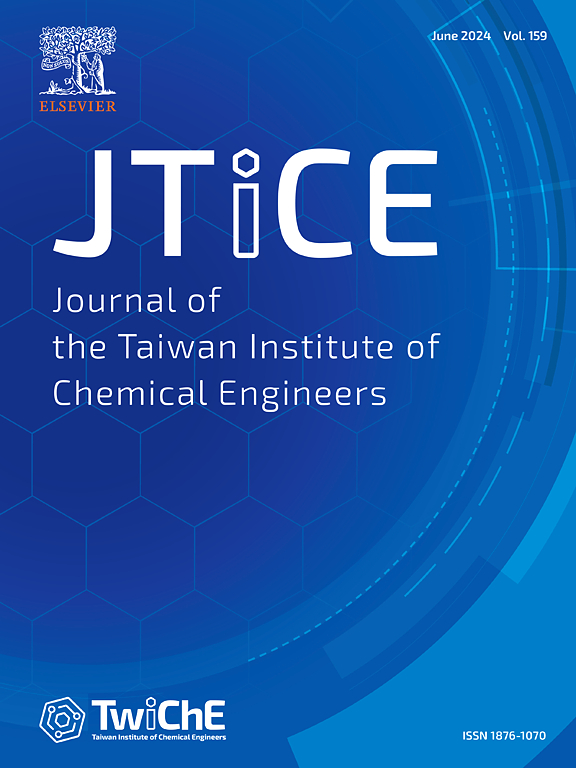Hierarchical synthesis of multi-layer graphene-like and nitrogen-doped graphitized carbon from dead leaf biomass for high-performance energy storage and CO₂ capture
IF 5.5
3区 工程技术
Q1 ENGINEERING, CHEMICAL
Journal of the Taiwan Institute of Chemical Engineers
Pub Date : 2025-03-20
DOI:10.1016/j.jtice.2025.106100
引用次数: 0
Abstract
Background
This research presents an integrated approach to convert dead leaf biomass into graphene-like materials through a combination of carbonization, activation, graphitization, and graphenization. Unlike conventional techniques that involve separate and a few sequential steps of carbonization, activation, graphitization, and graphenization to treat biomass, we executed the above four processes hierarchically.
Methods
DG (multi-layer graphene-like) and NG (nitrogen-doped graphitized carbon) were synthesized via hydrothermal and solvothermal impregnation followed by pyrolysis. Characterization was performed using Raman spectroscopy, BET analysis, XRD, XPS, HR-TEM, and FESEM. CO₂ adsorption was measured using TGA, and Energy storage performance was evaluated through cyclic voltammetry, galvanostatic charge-discharge measurements, electrochemical impedance spectroscopy, and long-term stability tests, all conducted using a three-electrode configuration.
Significant Findings
DG had a surface area of 1400 m²/g, CO₂ adsorption of 50 mg/g, and a specific capacitance of 184 F/g at 1 A/g. NG showed a surface area of 947 m²/g, CO₂ adsorption of 70 mg/g, and a specific capacitance of 206 F/g at 1 A/g. These results highlight the potential of biomass-derived graphene-like materials for sustainable CO₂ capture and energy storage.

用枯叶生物质分层合成多层类石墨烯和氮掺杂石墨化碳,用于高性能储能和CO 2捕获
本研究提出了一种综合方法,通过碳化、活化、石墨化和石墨化的组合,将枯叶生物质转化为类石墨烯材料。与传统的碳化、活化、石墨化和石墨化处理生物质的分离和几个顺序步骤不同,我们分层次执行上述四个过程。方法采用水热法和溶剂热浸渍法合成多层类石墨烯(sdg)和氮掺杂石墨化碳(NG),并进行热解。采用拉曼光谱、BET分析、XRD、XPS、HR-TEM和FESEM进行表征。采用TGA测量CO₂吸附,通过循环伏安法、恒流充放电测量、电化学阻抗谱和长期稳定性测试评估储能性能,所有这些都使用三电极配置进行。sdg的表面积为1400 m²/g, CO₂吸附量为50 mg/g,在1 a /g时比电容为184 F/g。NG的表面积为947 m²/g, CO₂吸附量为70 mg/g,在1 a /g时的比电容为206 F/g。这些结果突出了生物质衍生的类石墨烯材料在可持续二氧化碳捕获和能量储存方面的潜力。
本文章由计算机程序翻译,如有差异,请以英文原文为准。
求助全文
约1分钟内获得全文
求助全文
来源期刊
CiteScore
9.10
自引率
14.00%
发文量
362
审稿时长
35 days
期刊介绍:
Journal of the Taiwan Institute of Chemical Engineers (formerly known as Journal of the Chinese Institute of Chemical Engineers) publishes original works, from fundamental principles to practical applications, in the broad field of chemical engineering with special focus on three aspects: Chemical and Biomolecular Science and Technology, Energy and Environmental Science and Technology, and Materials Science and Technology. Authors should choose for their manuscript an appropriate aspect section and a few related classifications when submitting to the journal online.

 求助内容:
求助内容: 应助结果提醒方式:
应助结果提醒方式:


